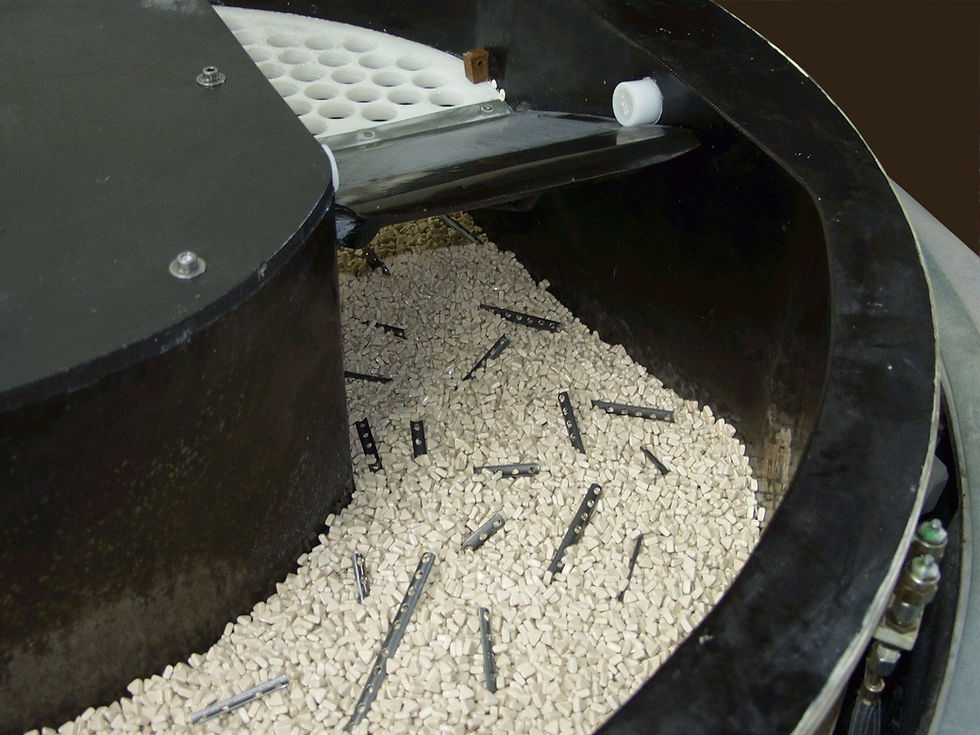THE 9 MOST COMMON MISTAKES YOU NEED TO AVOID TO GET THE MOST OUT OF YOUR MASS FINISHING MACHINE
- support71302
- Apr 19, 2018
- 2 min read

When maintained properly, mass finishing equipment can be very user friendly.
As a result sometimes operators can get into the habit of just turning them on each day and ignoring simple operating and maintenance rules. Avoiding the following 9 mistakes that operators commonly make will help you get the most from your equipment:
They let the media level drop, often with the aim of saving money or so they can get more work pieces in. This changes the ratio of work pieces per media though and can affect process times, unloading ability, can cause components to damage each other, and can result in the required finish not being achievable.
Small media isn’t removed from the bowl and screened regularly. When this happens, small media will lodge in the work pieces, changing process action and process times. It will also find ways of getting into the drains and blocking them.
They don’t use enough compounds (or don’t use any at all!). While their intention may be to save money, instead the abrasive media stops being cleaned (part of the compound’s job) and as a result, the media becomes glazed (becomes smooth), rendering it ineffective.
They don’t periodically check the drains and as a result undersized media can block the drainage holes. This raises the water level which in turn affects process capability and can result in the desired finish not being achieved. Ultimately the drain can become completely blocked causing the machine to flood.
They put too many work pieces in the machine. As per number 1 this can result in work pieces damaging each other, getting trapped under screens (where fitted), and can stop the media movement, causing work pieces to just bounce on the top of each other. In mass finishing there are process ratios to observe and where users exceed them they typically find that more is effectively less!
Forgetting to reevaluate machine operation after it has been disconnected from power. Often machines are wired in with the poles reversed and as such they run “backwards.” It is recommended to always check with the manufacturer of the machine to ensure that it is reinstalled correctly.
They don’t bother to check the lining. When lining wears it causes a loss in process movement and drive. Even worse, if it is completely ignored, abrasive media will abrade the steel fabrication and can eventually produce holes.
They don’t document and control the process. The mentality of “just throw things in” can exist and as operating conditions change eventually no one has an understanding of what to do and why. The phrase, “this is how we’ve always done it” prevails and as a result the finish they produce is often way below what is possible.
They don’t control the starting condition of the work pieces to be processed. Machine operating parameters are determined against the starting condition of a part. Should it change then the process needs to be reviewed. Using a machine is like baking a cake – all you have to do is follow the recipe. Change the ingredients though and you could be in for a nasty surprise!






























Comments